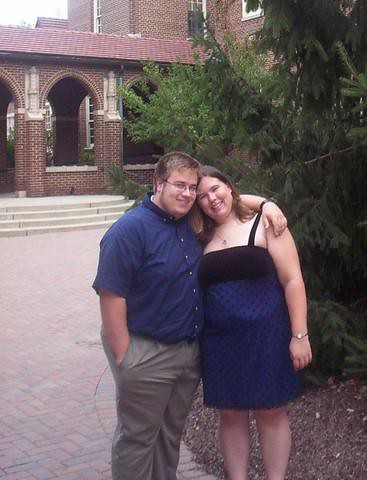Subject: Hermeneutics in Everyday Life
Suppose you're traveling to work and you see a stop sign. What do you do? That depends on how you exegete (interpret) the stop sign.
1. A post-modernist deconstructs the sign (knocks it over with his car), ending forever the tyranny of the north-south traffic over the east-west traffic.
2. Similarly, a Marxist refuses to stop because he sees the stop sign as an instrument of class conflict. He concludes that the bourgeois use the north-south road and obstruct the progress of the workers in the east-west road.
3. A serious and educated Catholic rolls through the intersection because he believes he cannot understand the stop sign apart from its interpretive community and tradition. Observing that the interpretive community doesn't take it too seriously, he doesn't feel obligated to take it too seriously either.
4. An average Catholic (or Orthodox or Coptic or Anglican or Methodist or Presbyterian or whatever) doesn't bother to read the sign but he'll stop the car if the car in front of him does.
5. A fundamentalist, taking the text very literally, stops at the stop sign and waits for it to tell him to go.
6. A seminary educated evangelical preacher might look up "STOP" in his lexicons of English and discover that it can mean: i) something which prevents motion, such as a plug for a drain, or a block of wood that prevents a door from closing; ii) a location where a train or bus lets off passengers. The main point of his sermon the following Sunday on this text is: when you see a stop sign, it is a place where traffic is naturally clogged, so it is a good place to let off passengers from your car.
7. An orthodox Jew does one of two things: i) Take another route to work that doesn't have a stop sign so that he doesn't run the risk of disobeying the Law; ii) Stop at the sign, say "Blessed art thou, O Lord our God, king of
the universe, who hast given us thy commandment to stop," wait 3 seconds according to his watch, and then proceed. Incidentally, the Talmud has the following comments on this passage: Rabbi Meir says: He who does not stop shall not live long. R. Hillel says: Cursed is he who does not count to three before proceeding. R. Simon ben Yudah says: Why three? Because the Holy One, blessed be He, gave us the Law, the Prophets, and the Writings. R. ben Isaac says: Because of the three patriarchs. R. Yehuda says: Why bless
the Lord at a stop sign? Because it says, "Be still and know that I am God."
8. A scholar from the Jesus Seminar concludes that the passage "STOP" undoubtedly was never uttered by Jesus himself because being the progressive Jew that he was, He would never have wanted to stifle people's progress. Therefore, STOP must be a textual insertion belonging entirely to stage III of the gospel tradition, when the church was first confronted by traffic in its parking lot.
9. A NT (New Testament) scholar notices that there is no stop sign on Mark street but there is one on Matthew and Luke streets, and concludes that the ones on Luke and Matthew streets are both copied from a sign on a street no one has ever seen called "Q" street. There is an excellent 300 page doctoral dissertation on the origin of these stop signs, and the differences between stop signs on Matthew and Luke street in the scholar's commentary on the
passage. There is an unfortunate omission in the dissertation, however; it doesn't explain the meaning of the text!
10. An OT (Old Testament) scholar points out that there are a number of stylistic differences between the first and second half of the passage "STOP." For example, "ST" contains no enclosed areas and five line endings,
whereas "OP" contains two enclosed areas and only one line termination. He concludes that the author for the second part is different from the author on the first part and probably lived hundreds of years later. Later scholars
determine that the second half is itself actually written by two separate authors because of similar stylistic differences between the "O" and the "P.
11. Another prominent OT scholar notes in his commentary that the stop sign would fit better into the context three streets back. (Unfortunately, he neglected to explain why in his commentary.) Clearly it was moved to its
present location by a later redactor. He thus exegetes the intersection as though the sign were not there.
12. Because of the difficulties in interpretation, another OT scholar amends
the text, changing the "T" to "H". "SHOP" is much easier to understand in context than "STOP" because of the multiplicity of stores in the area. The textual corruption probably occurred because "SHOP" is so similar to "STOP" on the sign several streets back, that it is a natural mistake for a scribe to make. Thus the sign should be interpreted to announce the existence of a shopping area. If this is true, it could indicate that both meanings are valid, thus making the thrust of the message "STOP (AND) SHOP."
13. A "prophetic" preacher notices that the square root of the sum of the numeric representations of the letters S-T-O-P (sigma-tau-omicron-pi in the Greek alphabet), multiplied by 40 (the number of testing), and divided by four (the number of the world-north, south, east, and west) equals 666.
Therefore, he concludes that stop signs are the dreaded "mark of the beast," a harbinger of divine judgment upon the world, and must be avoided at all costs.



1 comment:
This is hilarious!!! Thank you for posting it!
Post a Comment